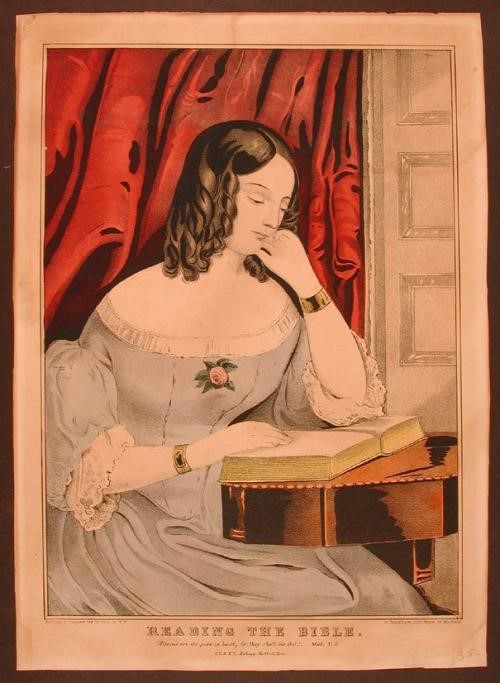The lithographic print was the medium through which depictions of contemporary life were made accessible to a broader audience in the 19th-century. Two successful printmakers, the Kellogg brothers, dominated the market from their shop on 136 Main Street in Hartford, Connecticut. A lively article in the city’s newspaper, Hartford Courant from 1845 describes the affordable prints, that graced the walls of many middle-class homes as “pleasing the eye, enlivening the solitude, informing the mind, and cultivating…that taste for the fine arts which everywhere tends to refine and ennoble humanity.”

Image Credit: Connecticut Historical Society https://chs.org/
Many of the compositions are of women in activities, like reading, putting their children to bed, sitting at the hearth with their husbands or in grief over a loss of a loved one. In my book, I am proposing connections these prints have with the ideology, Cult of True Womanhood. Developed in the early 19th century, it tied a woman’s virtue to piety, purity, submissiveness, and domesticity. Like a mirror, the compositions in the lithographic prints visually shaped and informed women’s behavior towards a pathway to happiness. In this blogpost, I feature “Reading the Bible” (1845). Note that as you contemplate the work, the sitter is uninterrupted by our gaze and our admiration of her beauty, especially in her tightly wound, brown curls that fall to the nape of her neck.
In the work we see a young woman reading a Bible at a desk. Her left-hand rests on the side of her face and her right hand and left elbow rest on the open book. She wears a pale blue dress trimmed with lace exposing creamy white shoulders, ornamented with a rose at her breast. Band-style bracelets, one on each writ, add a spark of glimmer to her pale arms. The bodice of the dress is full and flowing, juxtaposed to the hard lines of the wood table. A luxury red drapery falls behind her, partially covering a wood door. Through my contemporary lens, I can imagine the lady of the house, gazing at the framed print in her house, looking for visual sources for what it means to be beautiful, to connect with my spirit.
